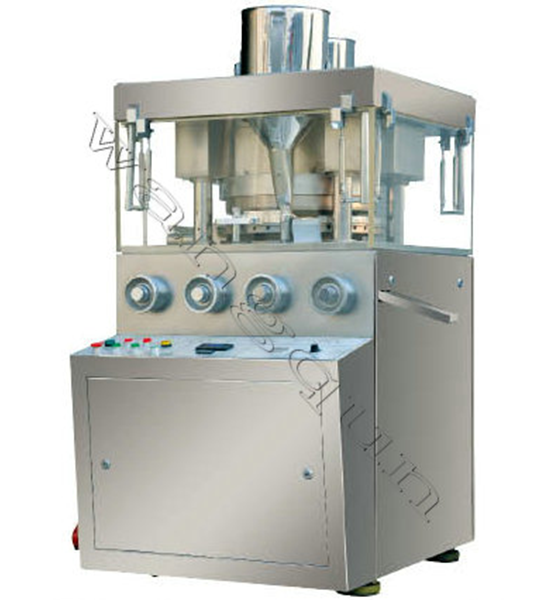rotary tablet press Maintenance and Troubleshooting Guide: Ensuring High-Quality Tablet Production
A rotary tablet press is a cornerstone in pharmaceutical, nutraceutical, and supplement manufacturing, providing efficient and precise tablet production. Proper maintenance and troubleshooting are essential for consistent tablet quality, operational safety, and prolonged machine life. This guide provides a detailed overview of transportation precautions, real-world applications, operational instructions, and upgrade maintenance plans to help manufacturers optimize performance and minimize downtime.
Table of Contents
Overview of Rotary Tablet Press
Transportation and Handling Precautions
Operational Instructions
Maintenance Guidelines
Troubleshooting Common Issues
Upgrade and Preventive Maintenance Plans
Applications and Case Studies
Conclusion
1. Overview of Rotary Tablet Press
A rotary tablet press compresses powders and granules into tablets with uniform size, weight, and hardness. Designed for continuous, high-volume production, it features a rotary turret with multiple stations, adjustable compression pressure, and a digital control interface. These presses are widely used in:
Pharmaceuticals: Prescription drugs, over-the-counter tablets
Nutraceuticals: Herbal supplements, vitamins
Food Supplements: Compressed candy, effervescent products
Chemical Applications: Detergent, catalyst, and water treatment tablets
Key benefits include:
High production efficiency
Consistent tablet quality
Modular design for easy maintenance
Compliance with GMP, CE, and ISO standards
2. Transportation and Handling Precautions
Proper transportation is critical to prevent damage during shipping and installation:
2.1 Pre-Transportation Measures
Ensure all movable parts are secured with bolts or protective packaging
Remove or secure punches, dies, and feeder components
Protect the machine with shock-absorbent materials and covers
2.2 During Transport
Use forklifts or cranes with adequate lifting capacity
Avoid excessive vibrations or sudden impacts
Keep the machine upright to protect hydraulic and electronic systems
2.3 Installation Post-Transport
Place on a level, vibration-free floor
Verify alignment of turret, punches, and dies
Inspect for damage during transport before operation

3. Operational Instructions
Proper operation ensures efficient, safe, and consistent tablet production:
3.1 Machine Setup
Check lubrication levels and clean all powder-contact surfaces
Inspect punches, dies, and feeder system for wear or blockages
Set compression pressure, turret speed, and fill depth based on tablet specifications
3.2 Material Loading
3.3 Production Monitoring
Observe initial batches for uniformity in size, weight, and hardness
Adjust pressure and feed rate as needed
Utilize digital monitoring systems for real-time production data
3.4 Safety Protocols
Use personal protective equipment (PPE)
Never place hands near moving punches or dies
Test emergency stop systems before starting operations
4. Maintenance Guidelines
Regular maintenance ensures optimal performance and machine longevity:
| Maintenance Task | Frequency | Notes |
|---|
| Clean hopper, turret, and punches | Daily | Prevent powder residue build-up |
| Inspect punches and dies | Weekly | Replace if worn or damaged |
| Lubricate moving parts | Weekly or per manufacturer | Use recommended lubricants |
| Check hydraulic system | Monthly | Inspect pressure and fluid levels |
| Inspect electrical system | Monthly | Verify wiring and connections |
| Turret alignment | Quarterly | Ensure consistent tablet compression |
Preventive maintenance reduces downtime and improves tablet quality consistency.
5. Troubleshooting Common Issues
| Problem | Possible Cause | Solution |
|---|
| Uneven tablet weight | Inconsistent powder feed | Adjust feeder, inspect hopper |
| Cracked tablets | Excessive compression or misaligned punches | Reduce pressure, realign punches |
| Tablet sticking | High moisture content or insufficient lubrication | Dry powder, lubricate punches and dies |
| Machine vibration | Loose bolts or uneven base | Tighten bolts, level machine base |
| Reduced output | Worn punches/dies or feeder blockages | Replace punches/dies, clear feeder system |
Prompt troubleshooting ensures continuous, high-quality production.
6. Upgrade and Preventive Maintenance Plans
Upgrading your rotary tablet press improves efficiency, energy savings, and operational reliability:
6.1 Upgrade Options
Digital control panels for precise speed and pressure adjustment
Automatic lubrication systems for continuous maintenance
Advanced safety shields and sensors
High-efficiency motors to reduce energy consumption
6.2 Preventive Maintenance Schedule
Inspect punches, dies, and turret alignment every 3–6 months
Calibrate compression pressure and fill depth quarterly
Conduct full electrical and hydraulic system checks annually
Document maintenance and repairs for compliance and quality audits
7. Applications and Case Studies
Case Study 1: Pharmaceutical Tablets
A European pharmaceutical company reduced downtime by 25% by implementing a scheduled maintenance program and using advanced digital monitoring. Tablet uniformity and production efficiency improved significantly.
Case Study 2: Nutraceutical Production
An Asian supplement manufacturer upgraded to automatic lubrication and high-efficiency motors, reducing energy consumption by 15% and extending the lifespan of punches and dies.
Case Study 3: Food Supplement Tablets
A manufacturer of effervescent vitamins used the troubleshooting guide to identify sticking issues due to moisture content, improving tablet quality and reducing waste.
8. Conclusion
The Rotary Tablet Press Maintenance and Troubleshooting Guide is an essential resource for pharmaceutical, nutraceutical, and supplement manufacturers. By following proper transportation, operational, maintenance, and troubleshooting practices, operators can ensure:
Consistent tablet quality
Reduced machine downtime
Improved energy efficiency
Extended machine lifespan
Compliance with GMP and safety standards
Regular upgrades and preventive maintenance help manufacturers maximize productivity, minimize operational costs, and maintain a safe working environment.











 Phone
Phone
Comment
(0)